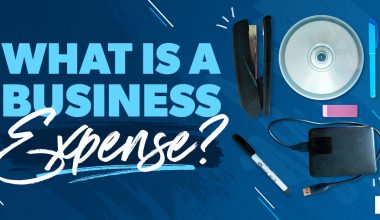Options provide advantages over other financial instruments, whether you use them to protect a portfolio, produce profits, or manipulate stock price movements. The price or premium of an option is a result of several factors. Implied volatility is an important component of the option-pricing equation, and being on the right side of implied volatility adjustments will dramatically improve the success of an options trade.
Let’s start with the fundamentals of options pricing to get a better understanding of implied volatility and how it affects option prices and stocks.
Basics of Option Pricing
Option premiums are made up of two key components: intrinsic value and time value. Intrinsic value is the intrinsic value or equity of an option. If you own a $50 call option on a stock that the current price is at $60, you can purchase the stock at the $50 strike price and then sell it in the market for $60. This option’s intrinsic value, or equity, is $10 ($60 – $50 = $10). The underlying stock’s price versus the option’s strike price is the only factor that influences an option’s intrinsic value. No other factor affects the intrinsic value of an option.
Let’s use the same example and claim this option costs $14. This means that the option premium is $4 higher than its intrinsic value. This is where the concept of time value comes into play.
The extra premium that is priced into an option to reflect the period of time before expiration is known as time value. The time before maturity, the stock price, the strike price, and interest rates affect the price of time. Nonetheless, none of these are as essential as implied volatility.
Read Also: IV Crush: Implied Volatility Crush Overview (+ tips on how to avoid them)
The Effect of Implied Volatility on Options
The implied volatility of a stock reflects its anticipated volatility over the life of the option. Option premiums adjust in response to changes in expectations. The supply and demand for the underlying options, as well as the market’s view of the share price’s trajectory, all have a significant impact on implied volatility. Implied volatility rises as expectations grow or as demand for an option rises. Options with high levels of implied volatility would have high option premiums.
Conversely, when the market’s demand for an option decline, so will implied volatility. Options with lower levels of implied volatility would have lower option premiums. This is significant because the rise and fall of implied volatility affect how costly or cheap time value is to the contract, which can influence the success of an options trade.
For example, if you own options, the price of these options rises as implied volatility rises. However, even if you are correct about the stock’s course, a shift in implied volatility will result in losses.
Each listed option has a different sensitivity to changes in implied volatility. Short-dated options, for example, will be less vulnerable to implied uncertainty, whereas long-dated options will be more sensitive. This is because long-dated options have more time value built into them, while short-dated options have fewer.
How to Take Advantage of Implied Volatility
Examining a map is one useful way to measure implied volatility. Many charting platforms allow you to chart an underlying option’s average implied volatility. You calculate it by adding up and averaging several implied volatility values. The CBOE Volatility Index (VIX), for example, is measured in a similar manner. To calculate the VIX, the implied volatility values of near-dated, near-the-money S&P 500 index options are averaged. You can do the same thing for any stock that has options.
The figure above shows how to calculate a relative implied volatility range. Examine the peaks to determine when implied volatility is relatively high, and the troughs to determine when implied volatility is relatively low. This allows you to decide whether the underlying options are relatively cheap or costly. If you can identify the relative highs, you can predict a potential decrease in implied volatility or, at the very least, a reversion to the mean. In contrast, if you identify areas where implied volatility is relatively low, you can predict a potential increase in implied volatility or a reversion to its mean.
As with everything else, implied volatility shifts in cycles. Periods with high volatility are preceded by periods of low volatility, and vice versa. Using relative implied volatility levels in conjunction with forecasting techniques assists investors in selecting the best trade possible. When deciding on a strategy, these principles are crucial in assessing a high likelihood of success. This allows you to maximize returns while minimizing risk.
Strategy Determination Using Implied Volatility
You already know that buying undervalued options and selling overpriced options is a good strategy. Although this process is not as simple as it sounds, it is an excellent technique to use when deciding on an acceptable choice strategy. Your ability to accurately measure and predict implied volatility would make it much easier to buy cheap options and sell expensive options.
Four Things to Keep in Mind When Predicting Implied Volatility
- Check to see whether implied volatility is high or low, and whether it is rising or falling. Remember that as implied volatility rises, so do option premiums. Options become less costly as implied volatility falls. When implied volatility hits extreme peaks or lows, it will most likely return to its mean.
- If you come across options with high implied volatility that yield costly premiums, recognize that there is a reason for this. Examine the news to find out what induced such high company expectations and demand for the options. It is not unusual for implied volatility to peak ahead of earnings announcements, merger and acquisition speculation, product approvals, and other news events. Since this is when there is a lot of market movement, the desire to participate in such events would push option prices up. Remember that after the market-anticipated event happens, implied volatility will fall and return to its mean.
- Consider selling strategies when you see options trading with high implied volatility levels. When option premiums become more costly, they become less appealing to buy and more enticing to sell. Covered calls, bare puts, short straddles, and credit spreads are examples of such tactics.
- Consider purchasing strategies when you come across options that are trading with low implied volatility levels. Buying calls, puts, long straddle, and debit spreads are examples of such tactics. Options are more appealing to buy and less tempting to sell when time premiums are low. Many options investors take advantage of this opportunity to buy long-dated options and retain them during a spike in volatility.
Read Also: Implied Volatility (IV): Formula and Calculator (+detailed steps for calculating IV)

Strategies with a High Implied Volatility
High IV strategies are trades that we most frequently use in high volatility environments. When implied volatility is big, we like to earn credit/sell premium and hope for volatility to decrease.
In the markets, implied volatility has historically outperformed realized implied volatility. As a result, we still sell implied volatility to gain a statistical advantage in the markets. As premium sellers, we prioritize IV because it is the most significant pricing element. We look at the existing IV range to see how the market is pricing IV in comparison to the past. When this IV reaches the upper limit of its scale, we will employ strategies that profit from this volatility extreme reverting to its mean.
Now that we understand why we use high IV tactics, it is critical to understand the particular trades we seek to position. We seek credit through a variety of means. It includes the selling of strangles, iron condors, verticals, covered calls, and naked puts. These strategies not only take advantage of an expected volatility crush. They also give us some leeway because we can sell premium further out of the money while collecting more credit than when IV is low. When IV is high due to a binary event (such as earnings), we may turn to tasty trade strategies such as the beef n’ cheddar or the super bull.
Strategies with Low Implied Volatility
When implied volatility is low, we will employ strategies that benefit from volatility increases as well as more directional strategies.
In the markets, implied volatility has historically outperformed realized implied volatility. As a result, we still sell implied volatility to gain a statistical advantage in the markets. Although we always seek a high IV rank when placing orders, the market does not always accommodate us. In bull markets, when the VIX falls, implied volatility in equities appears to be minimal. We continue to remain committed and do the same when IV reaches an extreme on the low end, just as we do when it reaches an extreme on the high end. As a result, in low IV, we will employ strategies that benefit from the extreme volatility expanding to a more reasonable value.
Now that we understand why we use low IV tactics, it is necessary to understand the particular trades we seek to position. When underlying are at extreme lows in IV, we are more likely to buy calendar spreads. If we want to make directional plays, we also buy debit spreads rather than sell credit spreads. Most notably, in low IV markets, we prefer to search for underlying in the industry with high IV, as premium-selling accounts for the majority of our statistical advantage.
How to Look for Options with Low Implied Volatility
Here’s what we need to do to capitalize on low-cost alternative opportunities.
- Look for stocks that have unusually low implied volatility (IV) in comparison to their own IV history. Low IV indicates low-cost options.
- Decide whether we have a reasonable reason to be strongly bullish or strongly bearish on each stock using a regular price map. Furthermore, there must be enough space for the stock to pass after its reversal, allowing for a reward-to-risk ratio of at least 3:1. Reject all implied volatility stocks that fail this test. You’ll eliminate many of the options as a result of this. The remaining stocks, if any, are our best bet.
- Determine the stop price that we would use if we were trading the stock itself. What would be the cost of exiting the trade if it went against us?
- Determine the price goal for the next 30 days. At what point in time will we take our benefit and leave the trade if everything went our way?
- Find the nearest monthly expiration date that is more than 90 days away on the stock’s option chain.
Further steps to identify options with low Implied Volatility
After taking the above steps into consideration, here are more steps to take:
- Determine the first in-the-money ( ITM ) strike price for that expiration date. That is the next strike price below the current stock price if we are bullish and using call options. If we are bearish and use put options, the next strike price above the current price is the goal.
- Determine the benefit sum if the stock remains at the target price and the Implied Volatility remains unchanged 30 days from now. This requires the use of choice diagramming tools.
- Determine the loss sum if the stock remains at the stop price and the Implied Volatility remains unchanged 30 days from now. Reject the trade if the reward-to-risk ratio is less than 2 to 1 30 days out.
- Recalculate the 30-days-out profit and loss figures, as well as the reward-to-risk ratio, assuming that IV returns to its one-year average. If the reward-to-risk ratio is less than 3:1, reject the trade.
- Position the trade if everything still looks fine.
- Place the order(s) to close the trade if the underlying reaches the stop price.
This will seem to be a long process just to purchase calls or puts. Maybe, but they’re not all that difficult, and each one is important.
What are some common misconceptions about implied volatility in options trading?
There are several misconceptions about implied volatility in options trading that can lead to poor investment decisions. Some traders believe that high implied volatility automatically implies that an option is overpriced or that options with low implied volatility are underpriced. This is not necessarily true, as implied volatility is just one factor that affects option prices. Additionally, some traders believe that implied volatility is always an accurate predictor of future stock price movement, but this is also not always the case. It’s important to understand the limitations of implied volatility and to use it as one tool in your options trading strategy.
Can implied volatility be used to determine the fair value of an option?
Implied volatility can be used as a tool to determine the fair value of an option. The Black-Scholes model uses implied volatility as one of its inputs to calculate the theoretical value of an option. However, it’s important to note that implied volatility is just one of several factors that affect the fair value of an option, and it is not a perfect predictor. Other factors such as interest rates, time to expiration, and underlying asset price must also be considered.
What is implied volatility skew in options trading?
Implied volatility skew is the difference in implied volatility between options with different strike prices. For example, if the implied volatility of options with a strike price of $100 is higher than the implied volatility of options with a strike price of $80, there is a positive skew. This can occur because of market events or expectations of future stock price movement. Understanding implied volatility skew can be useful in options trading, as it can provide insight into the market’s expectations of future stock price movement.
How does implied volatility affect implied volatility in options trading?
Implied volatility can have a significant impact on implied volatility in options trading. As implied volatility increases, the price of options will typically increase as well, as investors demand a higher premium for taking on the risk of the options. Conversely, as implied volatility decreases, the price of options will typically decrease, as investors demand a lower premium. Understanding how implied volatility affects options prices can be useful in options trading, as it can help traders make informed decisions about which options to buy or sell.
How does implied volatility differ between stocks and options?
Implied volatility can differ between stocks and options, as the volatility of the underlying asset affects the price of the options. In general, stocks with higher volatility will have options with higher implied volatility, as investors demand a higher premium for taking on the risk of the options. Additionally, options on individual stocks may have higher implied volatility than options on exchange-traded funds or indices, as the volatility of individual stocks can be more difficult to predict. Understanding these differences can be important in options trading, as it can help traders make informed decisions about which options to buy or sell.
How can implied volatility be used in risk management?
Implied volatility can be a useful tool in risk management, as it can help traders assess the risk of options positions. As implied volatility increases, the price of options will typically increase as well, making them more expensive to hold. This can be a signal to traders to close their options positions or adjust their risk management strategies. Conversely, as implied volatility decreases, the price of options will typically decrease, making them less expensive to hold. Understanding the relationship between implied volatility and options prices can be useful in risk management, as it can help traders make informed decisions about when to close positions or adjust their risk management strategies.
Conclusion
To make better trading decisions, you should consider the effect of implied volatility when choosing option strategies, expiration months, or strike rates. You can also employ a few basic volatility forecasting principles. This expertise will assist you in avoiding purchasing overpriced options and selling underpriced ones.
Implied Volatility Options FAQs
What is a good implied volatility for options?
For the U.S. market, an option needs to have a volume of greater than 500, open interest greater than 100, the last price greater than 0.10, and implied volatility greater than 60%.
Is implied volatility bad for options?
Usually, when implied volatility increases, the price of options will increase as well, assuming all other things remain constant. So when implied volatility increases after a trade has been placed, it’s good for the option owner and bad for the option seller.
How do you benefit from IV crush?
Profiting from IV crush is dependent on buying options when the implied volatility is low. This can be slightly ahead of an announcement as many will track company earnings a week in advance. Traders should pay close attention to the option’s historical volatility, and compare IV against its historical valuations.
Are options cheaper after earnings?
For the same reason, long option strategies will typically lose value quickly as volatility decreases (after the earnings report).16
- Implied Volatility (IV): Formula and Calculator (+detailed steps for calculating IV)
- IV Crush: Implied Volatility Crush Overview (+ tips on how to avoid them)
- Time In Force: Complete Definitive Guide for Beginners and Pros (+ tips on investing)
- Straddle Options: Best Examples to Master any Strategy
- Trading Deep In The Money Options- Risks to consider






